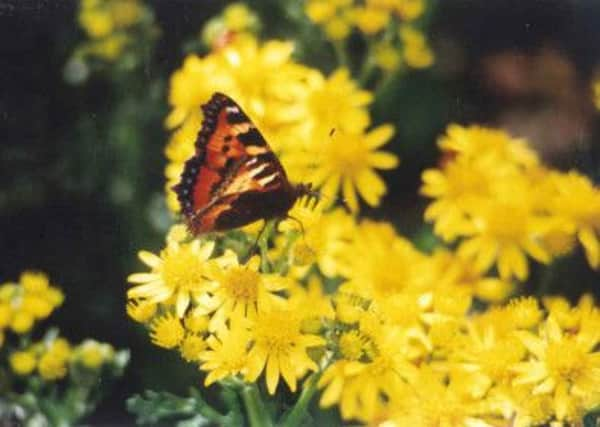RICHARD WILLIAMSON: Butterfly count brings cheer in the sunshine...


Butterflies in the brown family normally swarm by early July. These are the ones whose caterpillars feed on grass leaves. Plenty of that after June rain and then tropic heat. Suddenly, another brown family member, the ringlet, began to swarm. I love this butterfly. It is a Nyad, a dusky damsel, with almost black wings. It looks like something from the dense shades of the rainforest.
It has the languorous, unhurried and almost dreamy movements of those who cope with great heat. On its wings are curious dull white circles which give the butterfly its name.
Advertisement
Hide AdAdvertisement
Hide AdIn the first quarter-mile of my transect I had recorded 40 of them. By the end, nearly 200. The all-time record for one year stands at 521, way back in 1994. Will that be beaten this year? Things are not so bad after all, I thought.
There has been another surprise. Again, from the good old browns, the backbone of British butterflies: the marbled white.
Now this flamboyant flyer is not one of the nightshades. It is a pied piper, a magpie in black and white. It likes the exact opposite of the ringlet, it likes the sun. It is a Dryad. It tumbles through the grass like Pierrot, the itinerant pantomime minstrel. It is exciting for people out walking in the countryside because it is so easy to see. People point at it, and exclaim.
There is more to come. This is the best news of all. In the past month we have seen a return of the small tortoiseshell. This must be, together with the peacock and red admiral, the doyen of British insects. Everyone knows the small tortoiseshell. It creeps in behind your curtains in August, hoping for a safe place to slumber the winter through until next March. It flutters in terror at your window to be let out when you turn on your central heating and it thinks spring has come again.
Advertisement
Hide AdAdvertisement
Hide AdThis glorious black, blue, cream and marmalade mosaic of chequerwork gives you the same sense of wonder at nature’s cryptic camouflage as the tiger’s stripes or the orchid’s mimicry. How can such patterns evolve? For centuries it has been one of the best-loved butterflies of both town and country with its beautiful colours. It has been common because its needs are undemanding: a bed of nettles for its youngsters and any cottage flower for itself. Yet in recent times it has declined to a point that has made down-mouthers mutter ‘Extinction’.
Suddenly in July we began to see them again, sipping on the buddleia, cruising down the village street in the hot and dusty days just as it always did.
All is well with the world after all.